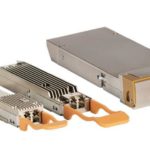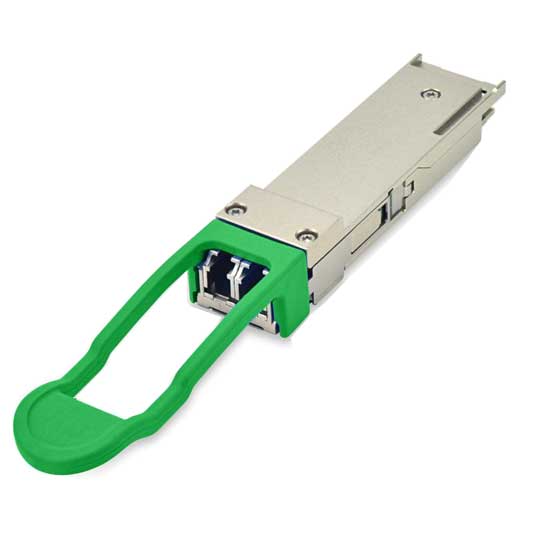HUAWEI transceivers can be classified according to different standards.
Depending on transmission rates, the transceivers are classified into 400G, 100GE, 40GE,25GE, 10GE, GE, and FE transceivers.
Depending on modes, the transceivers are classified into single-mode and multimode transceivers.
Depending on encapsulation types, the transceivers are classified into: SFP/eSFP, SFP+, XFP, SFP28, QSFP+, QSFP28, CFP/CFP2, CXP transceivers.
SFP: small form-factor pluggable. SFP transceivers support LC fiber connectors.
eSFP: enhanced small form-factor pluggable. An eSFP module is an SFP module that supports monitoring of voltage, temperature, bias current, transmit optical power, and receive optical power. Therefore, eSFP is also called SFP sometimes.
SFP+: small form-factor pluggable plus, SFP with a higher rate.
XFP: 10 Gigabit small form-factor pluggable. X is the Roman numeral 10, meaning that all XFP transceivers provide a 10 Gbit/s transmission rate. XFP transceivers support LC fiber connectors. They are wider and longer than SFP+ transceivers.
SFP28: small form-factor pluggable 28. SFP28 is an enhanced version of SFP+, but is designed for 25G signal transmission.
QSFP+: quad small form-factor pluggable. QSFP+ optical modules support MPO fiber connectors and are larger than SFP+ transceivers.
QSFP28: with the same interface size as a QSFP+ transceiver. A QSFP28 interface can use a 100GE QSFP28 transceiver or a 40GE QSFP+ transceiver.
CFP: centum form-factor pluggable. The dimensions of a CFP transceiver are 144.75 mm x 82 mm x 13.6 mm (L x W x H). CFP is a new transceiver standard that can be used in data communication and telecommunications .
CFP2: a form-factor of 1/2 in size of the original CFP specification.
CXP: “C” represents 12 in hexadecimal, “X” stands for a 10 Git/s transmitting rate per channel, and “P” means hot-pluggable.
Standards description can help you understand the meaning of letters and numbers in the name of the transceivers.
The following describes the standards, using 1000BASE-LX10 as an example:
- 1000 indicates the rate (1000 Mbit/s, in this case). Other rates include 10 Mbit/s, 100 Mbit/s, 10 Gbit/s, 40 Gbit/s, and 100 Gbit/s.
- BASE indicates baseband transmission.
- L represents a center wavelength of the laser. Currently, the following center wavelengths are available:
S (short wavelength: 850 nm),
L (long wavelength: 1310 nm),
E (extra long wavelength: 1550 nm),
B (single-fiber bidirectional long wavelength).
- X represents the encoding format. The encoding formats include T (twisted pair), X (8B/10B), R (64B/66B), and W (WIS).
- 10 indicates the number of channels. Currently, the value can be 4 or 10. If there is no number, the value is 1.
In this article, HUAWEI transceivers are mainly classified by transmission rates.
Transmission rate: FE

Transmission rate: GE
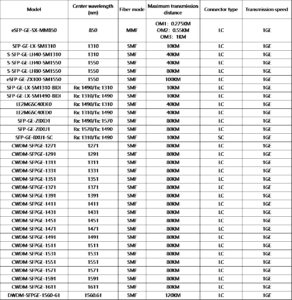
Transmission rate: GE-FE

Transmission rate: 10GE

Transmission rate: 40GE
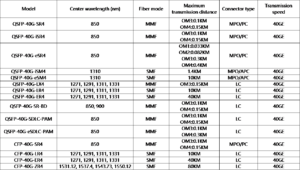
Transmission rate: 100GE
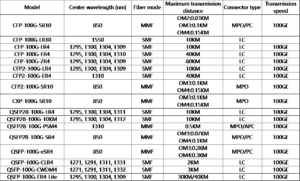
Transmission rate: 400GE

